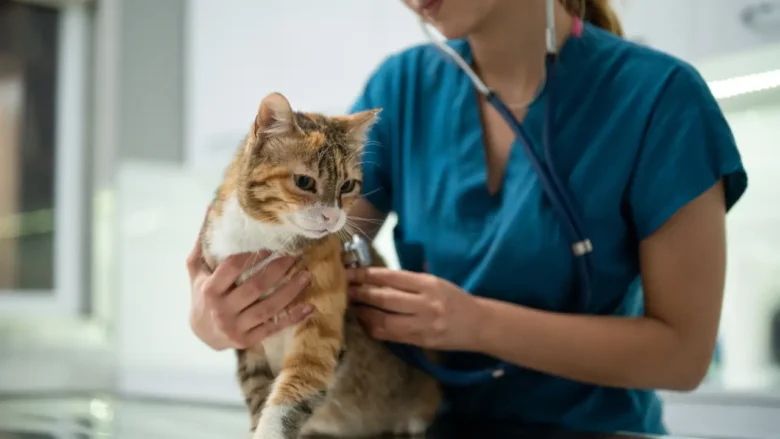Figuring out how to get pet insurance can be tricky, especially when you want to know what is covered. Conditions that existed before the pet insurance contract began are called pre-existing conditions. These factors are important for pet owners to consider when shopping for insurance because they have a direct impact on the health conditions covered by the policy. This article discusses what pet owners need to know about past medical history to make an informed decision about pet insurance.
1. Understand Pre-Existing Conditions
If a pet has a medical problem or health issue before the pet insurance policy begins, the pet has a pre-existing condition. Conditions such as diabetes, arthritis, or allergies that last a long time are examples of this. The same goes for illnesses or injuries that existed before the policy began. Most pet insurance companies will not cover conditions that existed before the policy was purchased because they were considered known risks at the time. Excluding pre-existing conditions is based on the idea behind insurance: it is meant to cover new and unexpected risks, not problems that already exist. Because pre-existing conditions existed before the policy came into effect, insurance companies will generally not cover them. This is to prevent “adverse selection,” which occurs when policyholders only seek coverage for health conditions they already know they have.
2. Pre-existing Condition Types
Pre-existing conditions can be divided into several groups, such as:
Chronic Conditions: Chronic conditions are long-term health problems that require ongoing care, such as diabetes or kidney disease.
Recurrent disease: A health problem that occurs repeatedly, such as ear infections or breathing problems.
Current condition: A health problem that was diagnosed at the time the policy was purchased, such as a new illness or injury.
Insurers often distinguish between these types of conditions when deciding whether to pay for certain expenses. Some may not cover pre-existing conditions at all, while others may cover conditions that have been properly treated and have not shown symptoms for a certain period.
3. How Pre-Existing Conditions Affect Coverage
When you apply for pet insurance, your pre-existing conditions can have a big impact on what is and is not covered. Most pet insurance policies have sections that clearly state that they do not cover pre-existing conditions. This means that if your pet gets sick before you sign up for insurance, you may have to pay for the care yourself. It is important to note that this limit only covers the situation before the accident. Your insurance may cover your pet if it develops a new health problem that is unrelated to the old one. This depends on the specifics of the plan you choose.
4. How Insurers Define Pre-Existing Conditions
Each insurance company has its own rules about what constitutes “pre-existing medical history” and how it should be treated. To determine if the condition has existed before, insurance companies often look at medical documentation and a history of veterinary visits. Because these definitions can vary, it’s important to read and understand your policy terms before you purchase insurance. Some insurance companies may require you to wait a certain amount of time before covering certain conditions. This can make it difficult to distinguish between the condition before coverage began and the condition just after it began. Communicating clearly with your insurance company and carefully reading your policy documents can help clarify these definitions.
5. Dealing with Pre-existing Conditions
Most pet insurance policies won’t cover conditions that were already present before coverage began, but there are some things you can do to keep your pet healthy and potentially mitigate the effects:
Regular veterinary care: Make sure your pet gets regular checkups and follow-up care so you can successfully treat any long-term conditions. Giving your pet the same care every time can help keep their health stable and reduce the risk of complications.
Wellness programs: Some veterinary practices offer wellness programs that include regular exams and treatments to keep your pet healthy. These plans aren’t insurance, but they can help you budget for the regular care your pet needs with a chronic illness.
Savings account: You may want to open a savings account just for your pet’s medical expenses. Regular contributions to the fund can help pay for medical expenses for people who already have certain medical conditions.
6. Explore Insurance Options
Some newer or alternative insurance models may offer different ways to cover pre-existing conditions that standard pet insurance often doesn’t. For example, some insurance companies offer only partial coverage or special plans for pets with pre-existing health conditions. Some insurance companies also offer plans that are open enough to accommodate your changing health needs. Before choosing an insurance policy, it’s a good idea to research what services different companies offer and how they handle claims. Look for plans that cover a variety of new situations and consider any additional benefits that may be helpful to your pet’s health.
7. Communicating with Insurers
If you have pre-existing conditions, it’s important to be able to talk to your insurance company. Tell your veterinarian everything you know about your pet’s health history and get specific answers about how he or she has handled previous situations. This can help you fully understand the policy’s benefit limits and decide if it meets your needs.
Conclusion
Pre-existing conditions are important to consider when purchasing pet insurance because they often affect the coverage provided by the policy. Most pet insurance policies do not cover your pet’s pre-insurance conditions, but understanding how these conditions are described and treated can help you make decisions about your pet’s health coverage and budget.
Caring for a pre-existing condition means taking your pet to the vet regularly, researching health plans, and setting up a savings account to cover the cost of ongoing treatment. By doing extensive research on different policies and having a clear conversation with your insurance company, you can find the policy that best suits your pet’s health needs and provides peace of mind for pet owners.
FAQs
1. What is “Pre-Existing Medical History” in Pet Insurance?
Pets have health conditions before they get pet insurance. These are called pre-existing conditions. This includes any long-term, recurring, or current illness that the person had or was diagnosed with before the insurance coverage began. Most pet insurance policies do not cover these things.
2. Why doesn’t pet insurance cover conditions that existed before the policy was issued?
Pet insurance does not cover pre-existing conditions, so there is no adverse selection. Insurance is designed to cover risks you don’t know about, not health conditions you were aware of before you bought the policy. By keeping pre-existing conditions out of the insurance system, the system can continue to exist.
3. Doesn’t pet insurance cover all pre-existing conditions?
Some pet insurance policies do not cover conditions before the policy starts, but this varies by insurance company. Some insurance plans may cover conditions that have been properly treated and have not caused symptoms for a certain period. It is important to read the fine print of each policy carefully to find out what it does not cover.
4. How does an insurance company determine if there has been a previous problem?
Insurance companies look at your pet’s medical history and veterinary records to determine if there is a pre-existing condition. Any health conditions that existed before the program began are considered pre-existing. This knowledge can help insurance companies decide what to cover and what not to cover.
5. Can I still get insurance for my pet if it has a pre-existing health condition?
Even if your pet has developed a health condition, you can still get pet insurance, but the condition will likely not be covered. It’s a good idea to consider multiple insurance companies and plans, as some insurance companies’ policies may have flexible terms or partial coverage options for new situations.



